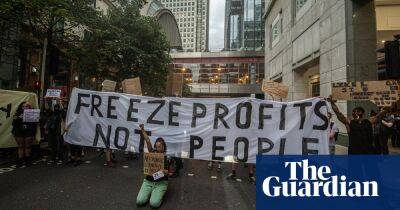Meltdown averted – but risk of repeat is obvious question Bank needs to answer
It was a close-run thing. That is a less-than-reassuring summary of the Bank of England’s analysis of its emergency intervention in the gilts market last week. Sir Jon Cunliffe, deputy governor for financial stability, spelled out what was at stake: “An excessive and sudden tightening of financing conditions for the real economy.” Translation: the current bout of turmoil in the mortgage market, for instance, would feel like a minor squall.
Some of the numbers in Cunliffe’s 11-page letter to the Treasury select committee are extraordinary. Pension funds, facing demands to put up collateral to support their holdings in LDIs, or liability-driven investments, were looking at dumping £50bn of long-dated government debt in “a short space of time”. This is a market where daily trading volumes are just £12bn.
“Multiple” LDI funds “were likely to fall into negative asset value” at Wednesday morning’s gilt prices. A process of winding up those funds would have started the following morning, creating more selling pressure and a “potentially self-reinforcing spiral” that threatened “widespread instability”.
Meltdown was avoided when the Bank announced its £65bn gilt-buying programme late morning on the Wednesday; yields on 30-year government IOUs fell by more than a full percentage point on the day. But the speed at which they had risen after Kwasi Kwarteng’s mini-budget on the previous Friday was unprecedented. Over four trading days, the rise in yields was more than twice as large as anything seen since 2000.
That statistic alone should oblige Kwarteng (and a few other ministers) to drop their half-baked pleas that global forces were entirely to blame. Yes, as Cunliffe describes, the global backdrop was poor – markets had been
Read more on theguardian.com

 theguardian.com
theguardian.com


















